How to Plant Chinese Cabbage
- April 8, 2024
- 0 comment
Chinese cabbage, known for its sweet flavor and crisp texture, is a staple in Asian cuisine. A member of the Brassica family, it’s relatively easy to grow and can be a rewarding addition to your garden. This guide will walk you through the process of planting, caring for, and harvesting Chinese cabbage.
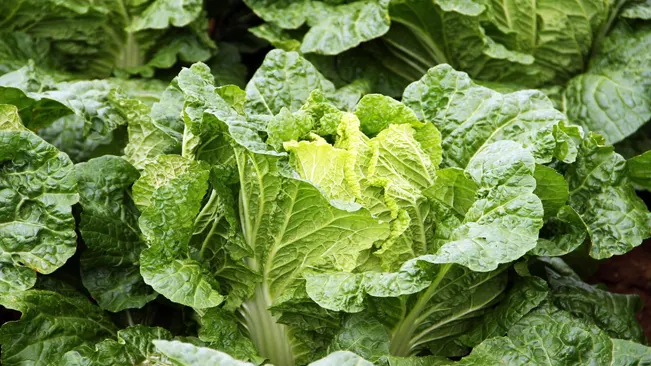
| Benefit | Description |
|---|---|
| Nutritional Value | High in vitamins (C, K, A), minerals (calcium, potassium, magnesium), and dietary fiber. Also contains small amounts of iron and manganese. |
| Low in Calories | Ideal for weight management diets due to its low calorie content. |
| Antioxidant Properties | Contains antioxidants like vitamin C, flavonoids, and other phytonutrients that help in fighting oxidative stress and reducing the risk of chronic diseases. |
| Good for Digestive Health | High fiber content aids in digestion and helps maintain a healthy gut flora. |
| Heart Health | Contains compounds that may help lower bad cholesterol levels, thus reducing the risk of heart disease. |
| Anti-inflammatory Properties | The presence of anti-inflammatory compounds can help in reducing inflammation in the body. |
| Bone Health | Rich in Vitamin K and calcium, both of which are important for bone health and preventing osteoporosis. |
| Boosts Immune System | High vitamin C content supports the immune system. |
| Skin Health | Vitamins A and C in Chinese cabbage are essential for skin health and may aid in skin repair and anti-aging. |
| Versatile Culinary Uses | Can be used in a variety of dishes, ranging from salads and stir-fries to soups and ferments, making it a valuable and adaptable ingredient in many cuisines. |
List on How To Plant Chinese Cabbage
- Choosing the Right Variety
- Timing and Planting
- Soil and Fertilization
- Watering and Care
- Pest and Disease Management
- Harvesting
- Storing and Using Your Harvest
Choosing the Right Variety
Choosing the right variety of Chinese cabbage for your garden depends on your culinary preferences and the specific growing conditions in your area. Let’s delve deeper into the two main types mentioned, Napa and Bok Choy, and explore a few other varieties as well
Napa Cabbage (Brassica rapa Pekinensis)
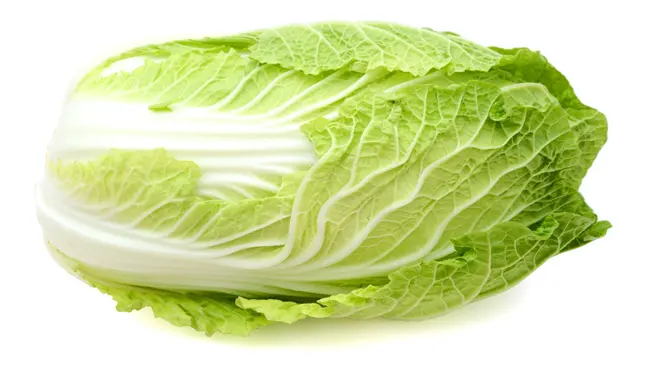
- Description: Napa cabbage, also known as Chinese leaf cabbage, forms elongated heads with tightly packed, crinkly, pale green leaves and white ribs.
- Flavor and Texture: It has a mild, sweet flavor with a crisp texture, making it perfect for salads, stir-fries, and traditional Korean kimchi.
- Growing Conditions: Napa cabbage prefers cooler temperatures and can be more tolerant of cold weather than other varieties. It typically requires a longer growing period.
Bok Choy (Brassica rapa Chinensis)
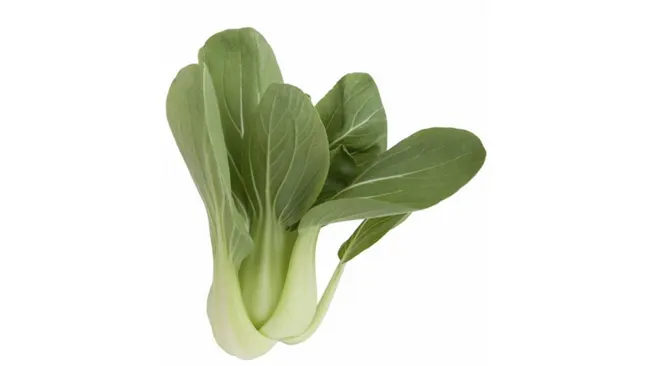
- Description: Bok Choy, also known as Pak Choi, features dark green leaves and white to pale green stalks. It has a more open and leafy structure than Napa.
- Flavor and Texture: Bok Choy is known for its slightly peppery flavor, and both leaves and stalks are commonly used in cooking.
- Growing Conditions: It matures faster than Napa cabbage and is more adaptable to a range of climates, including warmer environments.
Michihili (Brassica rapa Pekinensis)
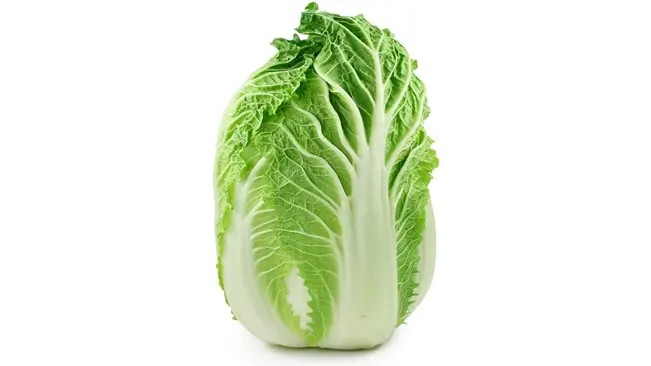
- Description: Michihili resembles Napa but often grows taller with more loosely packed leaves.
- Flavor and Texture: It has a slightly stronger flavor and is ideal for fermenting or stir-frying.
- Growing Conditions: Similar to Napa, it prefers cooler temperatures and has a moderate growth rate.
Tatsoi (Brassica rapa Rosularis)
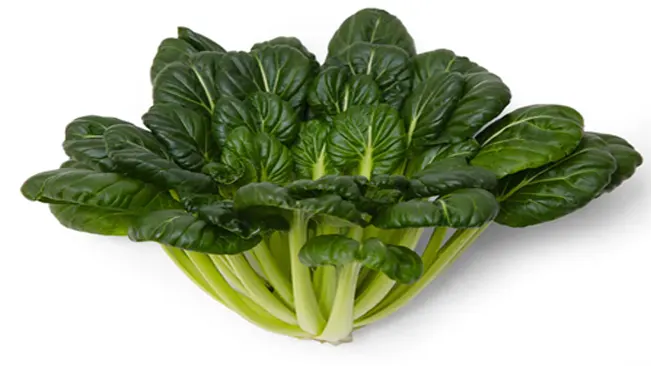
- Description: A smaller, rosette-shaped variety with dark green, spoon-shaped leaves.
- Flavor and Texture: Tatsoi has a mild, mustard-like flavor. It’s tender and often used in salads or as a cooked green.
- Growing Conditions: Tatsoi is cold-hardy and can even withstand light frosts, making it suitable for late fall or early winter harvests in some regions.
Choy Sum (Brassica rapa var. parachinensis)
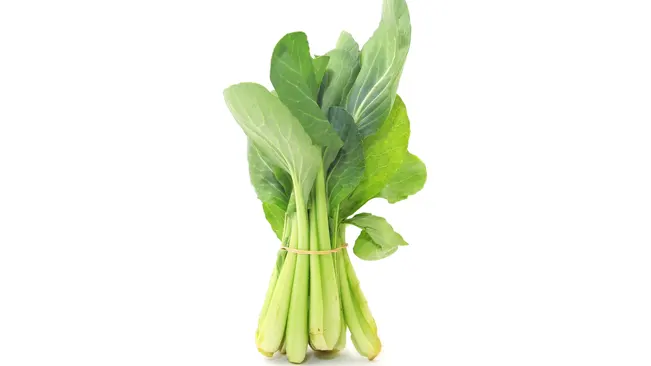
- Description: Choy Sum, also known as “flowering Chinese cabbage,” features green leaves and yellow flowers.
- Flavor and Texture: It’s known for its slightly bitter taste and is often used in stir-fries and soups.
- Growing Conditions: It grows well in mild to warm climates and is relatively easy to grow.
Timing and Planting
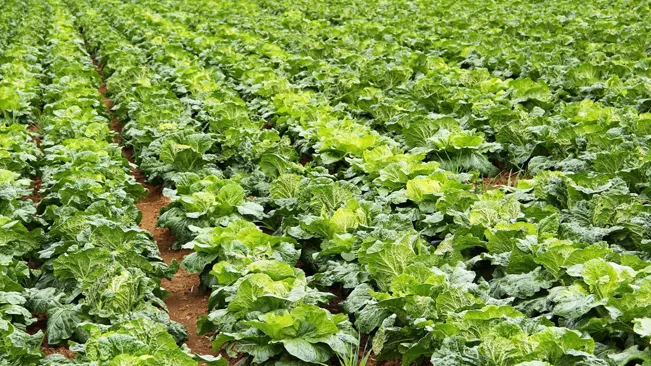
- Optimal Climate and Season: Chinese cabbage, being a cool-season crop, prefers temperatures between 55°F and 75°F. The ideal times to plant are either in early spring or late summer. Planting in early spring allows the cabbage to mature before the heat of summer, while late summer planting results in a fall harvest. In regions with mild winters, a late fall planting can also be successful for a winter harvest.
- Indoor Seed Starting: Starting seeds indoors is a great strategy to get a head start on the growing season, especially in regions with short springs or where late frosts are common. Begin 4-6 weeks before the expected last frost date. Use a seed starting mix and shallow trays or pots. Ensure the seeds receive adequate light—either from a sunny window or grow lights—to prevent them from becoming leggy.
- Transplanting: If you started your seeds indoors, transplant them outside after the danger of frost has passed and the seedlings have at least two true leaves. Harden off the seedlings by gradually exposing them to outdoor conditions over a week to reduce transplant shock.
- Direct Sowing: If you choose to sow seeds directly in the garden, ensure the soil has warmed up to at least 40°F, as Chinese cabbage seeds require a soil temperature of 45°F to 85°F for optimal germination. The germination process is generally quicker in warmer soil.
- Spacing for Growth: Proper spacing is crucial for the development of the plants. Space them about 12-18 inches apart. This spacing allows adequate room for growth and air circulation, which is important for preventing fungal diseases. Rows should be about 24 inches apart to provide room for cultivation and care.
- Germination Time Frame: Seeds typically germinate in 5-10 days. Cooler soil temperatures will result in slower germination, so if you’re direct sowing, be patient. Consistently moist soil during the germination period is essential. Avoid letting the soil dry out, but also be cautious not to overwater and cause the seeds to rot.
- Microclimate Considerations: In areas with unpredictable spring weather, consider using row covers to protect the young plants from late frosts. Likewise, if planting for a fall harvest, row covers can extend the growing season by protecting plants from early frosts.
- Soil Preparation: Before planting, enrich your soil with well-rotted compost or a balanced organic fertilizer. Chinese cabbage prefers soil that retains moisture but also drains well. A well-prepared bed helps ensure healthy growth.
Soil and Fertilization
Soil Requirements
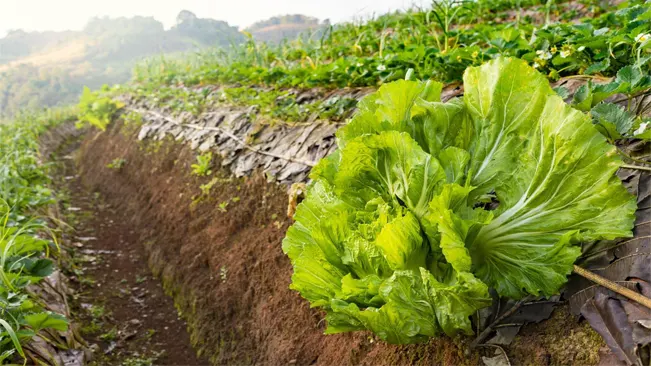
- Texture and Drainage: Chinese cabbage thrives in well-drained soil. This means the soil should allow excess water to drain away quickly to prevent root rot. Loamy soil, which is a mix of sand, silt, and clay, is often ideal due to its balance of drainage and nutrient retention.
- Organic Matter: The presence of organic matter in the soil is crucial. It improves soil structure, water retention, and provides nutrients as it breaks down. You can enhance your soil’s organic content by adding compost or well-rotted manure.
- pH Level: The pH level of your soil affects nutrient availability. Chinese cabbage prefers a slightly acidic to neutral pH, between 6.0 and 7.5. You can test your soil’s pH with a home testing kit. If your soil is too acidic, adding lime can help adjust the pH; if it’s too alkaline, sulfur or organic mulches like pine needles can lower the pH.
Fertilization
- Balanced Fertilizer: A balanced fertilizer, typically marked with an N-P-K (nitrogen-phosphorus-potassium) ratio like 10-10-10 or 20-20-20, is recommended. This balanced approach ensures that the plants receive a wide range of nutrients.
- Timing of Application: Fertilize at planting to give your Chinese cabbage a healthy start. A mid-season application helps support continued growth, especially for varieties that take longer to mature.
- Avoiding Over-Fertilization: Over-fertilizing can lead to excessive leaf growth at the expense of forming a tight, edible head. It can also increase the risk of disease and reduce the flavor of the cabbage. Use fertilizers according to package instructions and avoid the temptation to add more than recommended.
- Organic Options: For an organic approach, you can use compost, fish emulsion, or a commercially available organic vegetable fertilizer. These options release nutrients more slowly and are less likely to cause nutrient burn.
- Soil Testing: If you’re unsure about your soil’s nutrient levels, a soil test can be very informative. It can guide you in amending your soil appropriately for the specific needs of your plants.
Watering and Care
Watering
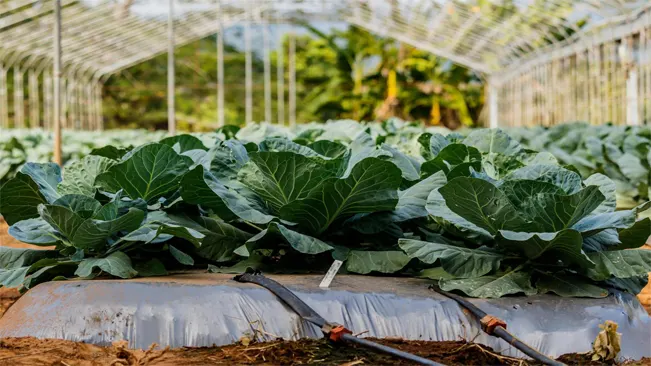
- Consistency Is Key: Chinese cabbage requires consistent moisture to grow well. Irregular watering can lead to problems like splitting heads or bolting (going to seed prematurely).
- Method of Watering: Drip irrigation or soaker hoses are ideal for keeping the soil evenly moist. These methods reduce water wastage and keep the leaves dry, which helps prevent fungal diseases. If you’re watering by hand, aim to water the soil directly rather than the leaves.
- Checking Soil Moisture: To check if your plants need water, stick your finger about an inch into the soil. If it feels dry at that depth, it’s time to water.
- Adjusting for Weather and Soil Type: Be ready to adjust your watering based on weather conditions and soil type. Sandy soils dry out faster than clay soils, and hot, windy weather can also increase the need for water.
Mulching
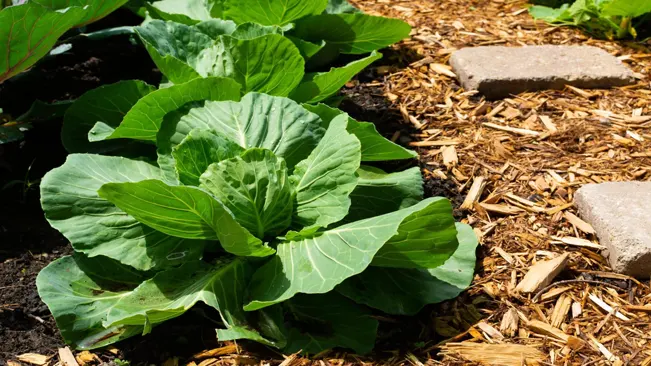
- Types of Mulch: Organic mulches like straw, bark, or compost are great for Chinese cabbage. They break down over time, adding nutrients to the soil.
- Application: Spread the mulch around the base of the plants, leaving a small gap around the stem to prevent rot. A layer of about 2-3 inches is usually sufficient.
- Benefits: Mulch helps retain soil moisture, suppresses weeds, and can also prevent soil-borne diseases from splashing onto the plants during heavy rains.
Weed Control
- Regular Weeding: Regularly check for and remove weeds. Weeds compete with your Chinese cabbage for nutrients, water, and light, and can also harbor pests and diseases.
- Cultivation: Gently cultivate the top layer of the soil to disrupt weed seedlings. Be careful not to disturb the roots of your cabbage plants.
- Natural Barriers: In addition to mulching, you can use landscape fabric or other barriers to suppress weed growth. Just make sure these barriers allow water to pass through.
Pest and Disease Management
Chinese cabbage can be susceptible to pests like aphids and cabbage loopers. Regularly inspect your plants and use organic methods like neem oil or insecticidal soaps to control pests. Crop rotation and proper spacing can help reduce disease risks.
Pest Management
- Aphids: These small, soft-bodied insects can be green, yellow, or black and are often found on the undersides of leaves. They suck sap from the plants, causing leaves to curl and stunt growth. To control aphids:
- Natural Predators: Introduce beneficial insects like ladybugs or lacewings, which feed on aphids.
- Organic Sprays: Neem oil, insecticidal soaps, or a homemade mixture of water and a few drops of dish soap can be effective.
- Physical Removal: In mild cases, simply spraying water can dislodge aphids from the plants.
- Cabbage Loopers: These caterpillars are green with white stripes and cause damage by chewing large holes in the leaves. Control methods include:
- Hand Picking: Regularly inspect your plants and manually remove any visible caterpillars.
- Bacillus thuringiensis (Bt): An organic bacterial spray that targets caterpillars without harming beneficial insects.
- Floating Row Covers: Use these to physically block pests from reaching the plants.
Disease Management
- Clubroot: A soil-borne fungal disease causing swollen and deformed roots, leading to stunted growth. To prevent clubroot:
- Soil pH Adjustment: Keep soil pH around 7.0, as the disease thrives in acidic soil.
- Crop Rotation: Avoid planting Brassicas in the same spot each year.
- Good Hygiene: Clean tools and boots to prevent spreading spores.
- Downy Mildew: This appears as yellow patches on the leaf surface and a white to grayish mold on the underside. To manage downy mildew:
- Proper Spacing: Ensure good air circulation around the plants.
- Reduce Leaf Wetness: Water the soil directly rather than overhead watering to keep the leaves dry.
- Fungicides: Organic fungicides can be used as a preventive measure.
- Black Rot: A bacterial disease that causes yellowing and wilting of leaves, often with a V-shaped pattern. To combat black rot:
- Crop Rotation: Avoid planting Chinese cabbage in the same area as other Brassica plants for at least two years.
- Remove Infected Plants: Immediately remove and destroy any infected plants.
- Sanitation: Keep the garden free of plant debris where the bacteria can overwinter.
Harvesting
Harvest Time
The time it takes for Chinese cabbage to reach maturity varies based on the specific variety. It’s important to monitor the growth of your Chinese cabbage, as the maturity can be affected by factors like weather conditions, soil fertility, and water availability.
- Varieties like Napa cabbage typically mature in about 70 to 85 days.
- Faster-growing varieties, such as Bok Choy, can be ready in as little as 50 days.
Harvest Method
Whole Head Harvesting

- This method is commonly used for head-forming varieties like Napa cabbage.
- Observe the head of the cabbage; it should be firm and dense. If it feels loose or spongy, it may need more time to mature.
- To harvest, use a sharp knife to cut the cabbage head at its base, near the lowest leaves.
- Be careful not to crush or damage the head during harvesting.
Leaf-by-Leaf Harvesting
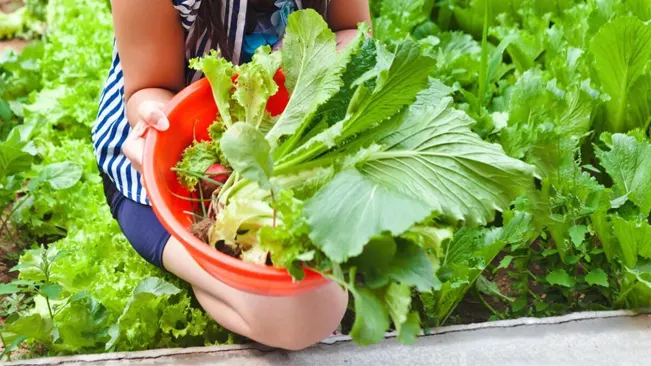
- This approach is ideal for leafy varieties like Bok Choy.
- You can start harvesting outer leaves once they are large enough to use, typically when they are about 6 inches long.
- Gently pull or cut the outer leaves, leaving the center of the plant to continue growing. This method allows for a continuous harvest over a longer period.
- Harvest in the morning when the leaves are most crisp for the best quality.
Post-Harvest Tips
- After harvesting, rinse the cabbage thoroughly to remove any dirt or insects.
- Chinese cabbage is best used fresh, but it can be stored in the refrigerator for a short period. Wrap the heads in plastic and store them in the crisper drawer.
- If you notice any signs of bolting (such as the plant starting to flower), harvest immediately, as the quality will decrease rapidly after bolting begins.
Storing and Using Your Harvest
Storing Your Chinese Cabbage Harvest
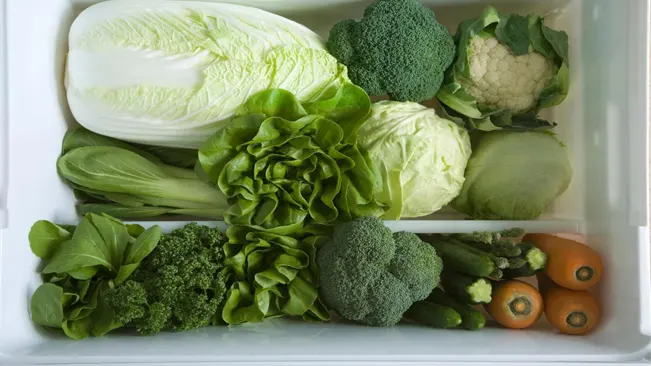
- Refrigeration: Chinese cabbage can last for several weeks in the refrigerator. The key is to store it in a way that maintains its freshness and prevents it from drying out.
- Wrapping: Before refrigerating, wrap the cabbage in a damp paper towel and then place it in a plastic bag. This helps to maintain the right humidity level around the vegetable.
- Avoid Washing Before Storage: It’s best not to wash the cabbage before storing it, as the extra moisture can encourage spoilage. Wash it just before you’re ready to use it.
- Avoid Cutting: Store the cabbage whole if possible. Once you cut into it, the cabbage starts to lose its freshness more rapidly.
- Checking for Freshness: Over time, check the cabbage for any signs of spoilage, like bad smell or slimy texture. Remove any spoiled leaves to prevent the spread to the rest of the head.
Culinary Uses of Chinese Cabbage
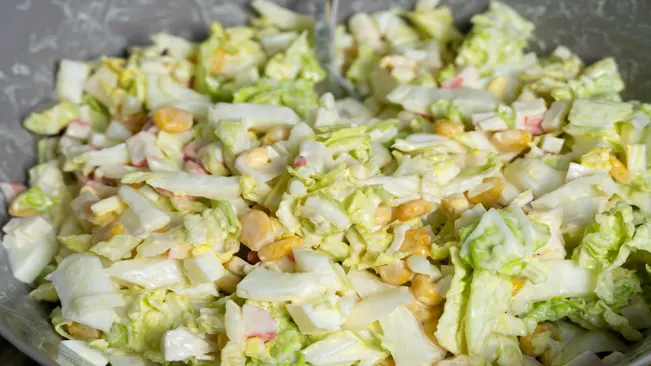
- Salads: Chinese cabbage’s crisp texture makes it perfect for salads. Use it as the base for a refreshing coleslaw or mix it with other greens for a nutrient-rich salad.
- Stir-Fries: Add sliced Chinese cabbage towards the end of cooking a stir-fry. It cooks quickly and adds a crunchy texture and sweet flavor.
- Soups and Stews: Incorporate Chinese cabbage into soups and stews. It wilts down and adds a subtle sweetness, which is particularly good in Asian-inspired broths.
- Kimchi: Chinese cabbage is a primary ingredient in kimchi, a traditional Korean side dish. Fermenting the cabbage with seasonings like chili pepper, garlic, ginger, and fish sauce creates a flavorful and healthy probiotic food.
- Steaming and Boiling: Steam or boil Chinese cabbage for a simple, healthy side dish. Dress it with a light sauce, such as soy or oyster sauce, for added flavor.
- Wraps and Rolls: The leaves can be used as wrappers for meat, rice, or vegetable fillings, offering a low-carb alternative to bread or tortillas.
- Pickling: You can pickle Chinese cabbage for an acidic, tangy treat. Pickled cabbage can be a great addition to sandwiches or as a standalone snack.
Conclusion
Growing Chinese cabbage can be a fulfilling experience, yielding a versatile and nutritious vegetable for your kitchen. With the right care and conditions, you can enjoy a bountiful harvest that adds freshness and flavor to your meals.
FAQs (Frequently Asked Questions)
- What is the best time of year to plant Chinese cabbage?
Chinese cabbage thrives in cooler weather. Plant in early spring after the risk of frost has passed, or in late summer for a fall harvest. - How deep should I plant Chinese cabbage seeds?
Plant the seeds about 1/4 inch deep in the soil. This shallow planting helps ensure that they receive enough light and warmth to germinate effectively. - How much space do Chinese cabbage plants need?
Space the plants about 12-18 inches apart in rows, keeping rows about 24 inches apart. This spacing gives each plant enough room to grow and reduces competition for nutrients. - What kind of soil is best for Chinese cabbage?
Chinese cabbage prefers well-drained soil rich in organic matter. A neutral to slightly alkaline soil pH (6.0 to 7.5) is ideal. - How often should I water Chinese cabbage? Keep the soil consistently moist. Generally, about 1 inch of water per week, either from rainfall or irrigation, is sufficient. Avoid over-watering, which can lead to root rot.
- Does Chinese cabbage need a lot of sunlight?
Chinese cabbage grows best in full sun, but it can tolerate partial shade, especially in hotter climates where some afternoon shade can prevent bolting. - What are common pests that affect Chinese cabbage and how can I control them?
Aphids, cabbage loopers, and flea beetles are common pests. Use organic pest control methods like neem oil, insecticidal soaps, or introduce beneficial insects like ladybugs. - When is Chinese cabbage ready to harvest?
It generally takes 50 to 85 days to mature, depending on the variety. The heads should be firm and dense when squeezed. For leafy varieties, you can harvest leaves as needed. - Can Chinese cabbage be grown in containers?
Yes, Chinese cabbage can be successfully grown in containers. Ensure the container is large enough (at least 12 inches deep and wide) and has good drainage. - How do I prevent Chinese cabbage from bolting?
Bolting can be prevented by avoiding stress like extreme temperatures, irregular watering, and overcrowding. Planting at the correct time and providing consistent care are key.

Kristine Moore
Forestry AuthorI'm Kristine Moore, a seasoned garden landscaping professional with over 30 years of experience. My extensive career has been dedicated to transforming outdoor spaces into stunning, sustainable landscapes. With a deep understanding of horticulture, design principles, and environmental stewardship, I have become a respected figure in the field, known for creating harmonious, visually appealing, and eco-friendly gardens. My commitment to excellence and continuous learning in landscaping trends and techniques has solidified my reputation as an expert in garden design and implementation.













Leave your comment